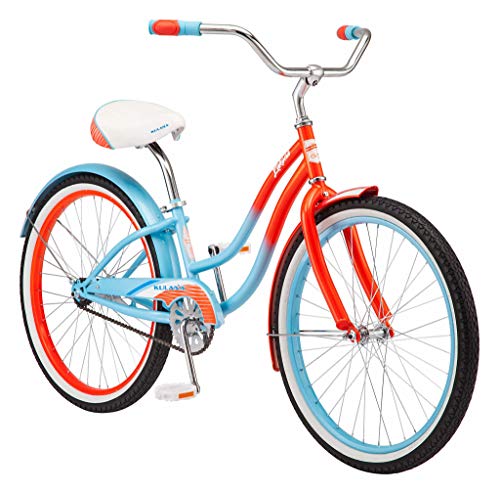OK attempted my first foray into the mystical black magic realm of wheel building, a New Departure "D" coaster brake hub, drop center rim (all 36 hole, rim 26"). The wheel was broken down with 40+% of the spokes either seized, bent, or rusted beyond wanting to keep. Now I measured the spokes, 10 5/8" (270mm), the only difference was the original stuff had 3/4" brass nipples and obviously more thread area on the spokes. Ordered the 14g 10 5/8" (270mm) w/ nipples from Husky.
So here we go...
Via several videos I laced the thing up by first, outer fed spokes starting to the right of the valve stem hole, skip three holes, load the next. Flip the whole thing, same with the outer spokes using the next CW hole that lined up from the starting point... something to that effect any way, I'm assuming I got it correct cause the end result did in fact look like a wheel
Started the inner fed spokes with the usual hub assembly twist, inner spokes being fed going CW, over the outer fed spoke, over the next outer spoke, under the next outer fed spoke, skip the first hole, and thread to the next hole... What I believe is a "3 Cross" lace pattern, correct?
So everything is actually looking good at this point, it actually looks like a wheel!!! So I mark up a screwdriver so I can easier count the turns, work my way around the first time and everything is still looking good... repeat. So now here's where the problem occurs, next run through and I'm bottoming out the nipples... and the spokes still ain't close to tight!
Now beings that this is my first attempt I'm actually pretty cool with the fact that something is messed up... it was at least round, the dish appeared to centered on the hub, spokes just seem too long?! So since I measured the spokes that were on the wheel and they were in fact 10 5/8" is it possible that the original wheel was laced in a "4 cross" pattern? Does that even exist? If so was a 4 cross pattern the norm in the skip tooth era?
I'm looking for an assessment here, so please don't just post a link on wheel building how to's... of course if my assumption is correct I'll take a 36 hole 4 cross wheel build link happily!
Thanks in advance,
Mike
So here we go...
Via several videos I laced the thing up by first, outer fed spokes starting to the right of the valve stem hole, skip three holes, load the next. Flip the whole thing, same with the outer spokes using the next CW hole that lined up from the starting point... something to that effect any way, I'm assuming I got it correct cause the end result did in fact look like a wheel

Started the inner fed spokes with the usual hub assembly twist, inner spokes being fed going CW, over the outer fed spoke, over the next outer spoke, under the next outer fed spoke, skip the first hole, and thread to the next hole... What I believe is a "3 Cross" lace pattern, correct?
So everything is actually looking good at this point, it actually looks like a wheel!!! So I mark up a screwdriver so I can easier count the turns, work my way around the first time and everything is still looking good... repeat. So now here's where the problem occurs, next run through and I'm bottoming out the nipples... and the spokes still ain't close to tight!
Now beings that this is my first attempt I'm actually pretty cool with the fact that something is messed up... it was at least round, the dish appeared to centered on the hub, spokes just seem too long?! So since I measured the spokes that were on the wheel and they were in fact 10 5/8" is it possible that the original wheel was laced in a "4 cross" pattern? Does that even exist? If so was a 4 cross pattern the norm in the skip tooth era?
I'm looking for an assessment here, so please don't just post a link on wheel building how to's... of course if my assumption is correct I'll take a 36 hole 4 cross wheel build link happily!
Thanks in advance,
Mike






























































